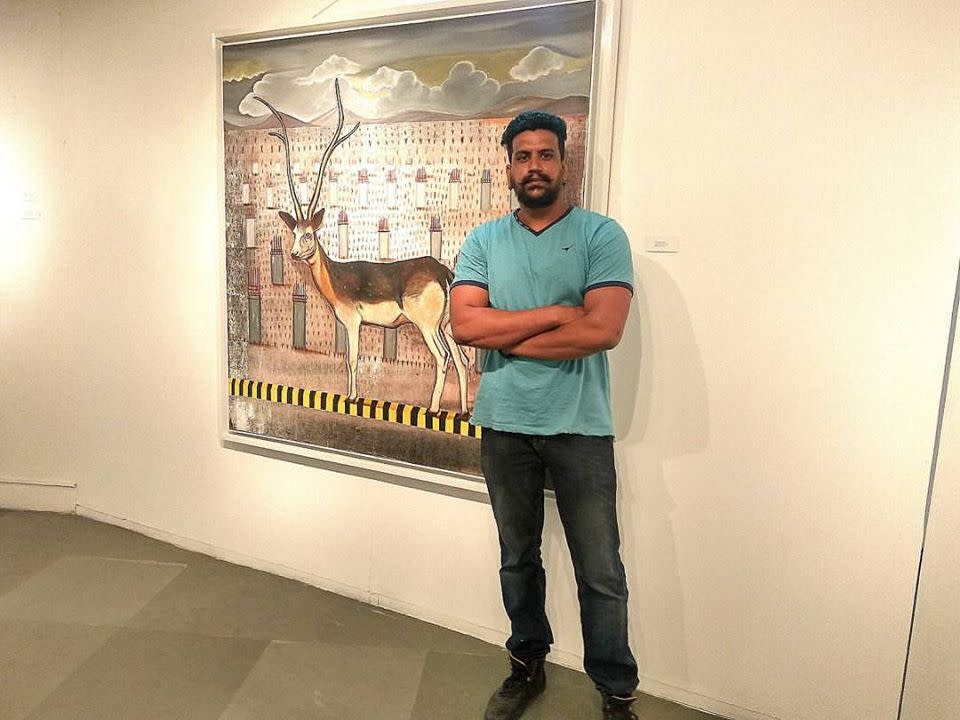 Listen to this article
•
15:34 min
Listen to this article
•
15:34 min
There is an apocalyptic quality to Ashish Kushwaha’s work. His canvases feature some of India’s most popular animal species—peacocks, elephants, vultures, the majestic one-horned rhinoceros—but in urban landscapes like footpaths, concrete pavements, and construction sites with metal prongs sticking out of foundation pillars. They are sceneries we see on a daily basis, on our way to work or to the supermarket, but juxtaposed with the animals they seem bleak, bordering on sinister.
The ecological undertone to Kushwaha’s work is one of the principle reasons for his success as an artist. He currently lives in Mumbai but he grew up near Bilaspur in Chhattisgarh, a small city bisected by the winding Arpa River. Bilaspur has its fair share of urban sprawl but for lovers of wildlife, it is known primarily as the gateway to Achanakmar Wildlife Sanctuary: 557 square kilometres of reserve forest that hosts tigers, leopards, sloth bears, nilgai, and black buck.

Understandably, Kushwaha experienced a jarring sense of displacement when he left this home full of trees and monsoon waterfalls to live in the heat and congestion of a mega-city.
He channels this discomfort into his show titled “Inheritance of Loss”, which debuted at the India International Centre in New Delhi, 2018. The oil and watercolour works explore our planet’s vanishing forests and the uncaring pace of urban development. “My paintings are silent conversations,” Kushwaha says, “I am always thinking of prakriti—harmony of all living things, animals and humans on our planet”. This is art with a mission greater than hanging on the wall behind the sofa. It is meant to inspire empathy as well as action to protect the fragile beauty of our one and only terrestrial home.

Environmental art is a genre that has been gaining increasing importance in the last few decades. Across the globe, artists ranging from painters, sculptors and photographers to documentary filmmakers, graffiti artists, even chefs have been exploring themes such as global warming, climate change, marine conservation and the food crisis. Through their work, they urge viewers to hold a mirror to themselves, reconsider consumption patterns and make more ecologically sound choices in everyday lives.
Kushwaha speaks through his canvas, drawing the viewer with geometry, colour (or the lack of it), and landscape to drive home the importance of harmony with nature. On the one hand, his paintings are about wildlife conservation and the impact of the human race on the planet. If we do not act now, his works seem to say, we might lose some of Earth’s most exquisite creatures in our lifetime. But the larger message, one that sinks in over time is this: What aspect of the human existence are we denying ourselves by severing our relationship with nature?





